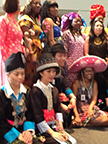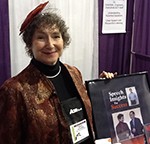Sonia Sotomayor : An Inspiration for Inclusion, Diversity and Engagement
June 18, 2013
Sonia Sotomayor : An Inspiration for Inclusion, Diversity and Engagement
 (This is the first of a 3 part series. Future blogs will address Sonia Sotomayor’s insights on communication skills and perception of emotions as important career building skills.)
(This is the first of a 3 part series. Future blogs will address Sonia Sotomayor’s insights on communication skills and perception of emotions as important career building skills.)
At the Medtronic diversity fair, I noticed a poster that said, “ Inclusion means
I can be me. Diversity means I have a voice and engagement means I want to do
my best work.”
In reflecting on the life and successes of Supreme Court Justice, Sonia Sotomayor,
these themes shine through. I was inspired by her outstanding autobiography, My Beloved World and I would like to share her insights on inclusion, diversity and engagement.
“I can be me and feel included.”
Ms. Sotomayor stated, “What I learned from my Latino community in the Bronx proved as relevant to my success as my Ivy League schooling was”.
It is essential that we examine our lives to draw from our full experiences.
She said of one of her legal mentors,
“He gave me the confidence…that my personal background is something
better than a disadvantage to overcome.”
She went on to say ,”People I represent are diverse in their opinions, cultures and experiences but united in a common bond .” This bond is the struggle to feel respected and included.
As in U.S. corporate diversity efforts, she describes the role
of her mentors at Princeton as “creating an atmosphere when diverse students can see their efforts accepted, their groups as distinct and their own traditions as honored. She hopes that diversity “goes beyond simple recognition to
‘accommodate and harmonize’”. This takes constant awareness and nurturing on everyone’s part.
“I have a voice in a diverse world.”
“As you discover what strengths you can draw from your community”, states Ms. Sotomayor, “Look both outwardly and inwardly. Build bridges instead of walls.” Too often we falsely jump to the conclusion that our personal voice does not matter. She reminds us that it does.
Sonia Sotomayor goes on to say, “There are no actual barriers, just inertia”. Sometimes we are lulled into not doing anything and accepting the old ways as the only reality. Gaining momentum can propel us forward into areas we previously though were impossible.
In college, she learned that her opinion was valuable and fortified by the influence of like minded colleagues to build that momentum.
“ I want to be engaged and do my best work.”
She gives clear steps on how to prepare herself for leaps in her career to the
next level. Ms. Sotomayor advises us to:
1. Observe.
2. Recognize your fears and insecurities.
3. When you get to the next level, give yourself a
transition time to ramp up your skills.
4. Make sure you separate your
specific fears of the new situation from the general fears you may have
picked up from others.
5. Focus on areas to bridge your gaps and
work intensively on them.
To do your best work, you have to be a good listener. Justice Sotomayor
suggests a 3 part listening plan.
“1. Suspend Judgment.
2. Feel their Pain .
3. Point out a fact that they may have overlooked.”
To do your best work, you should learn from the best. She had mentors who
recognized her unspoken ambitions. She found that she could distill their
years of experience to avoid their mistakes and build on their successes.
We are fortunate to have a wise Latina,such as Sonia Sotomayor influencing the laws of the USA, seeking liberty and justice for all.
